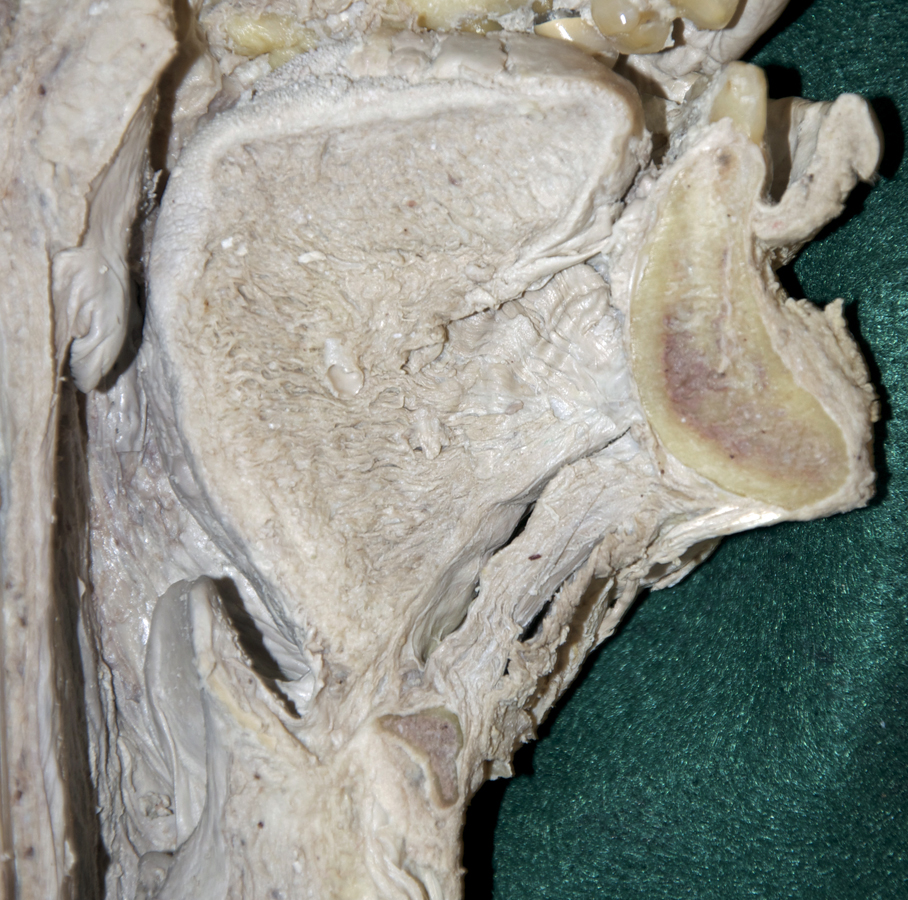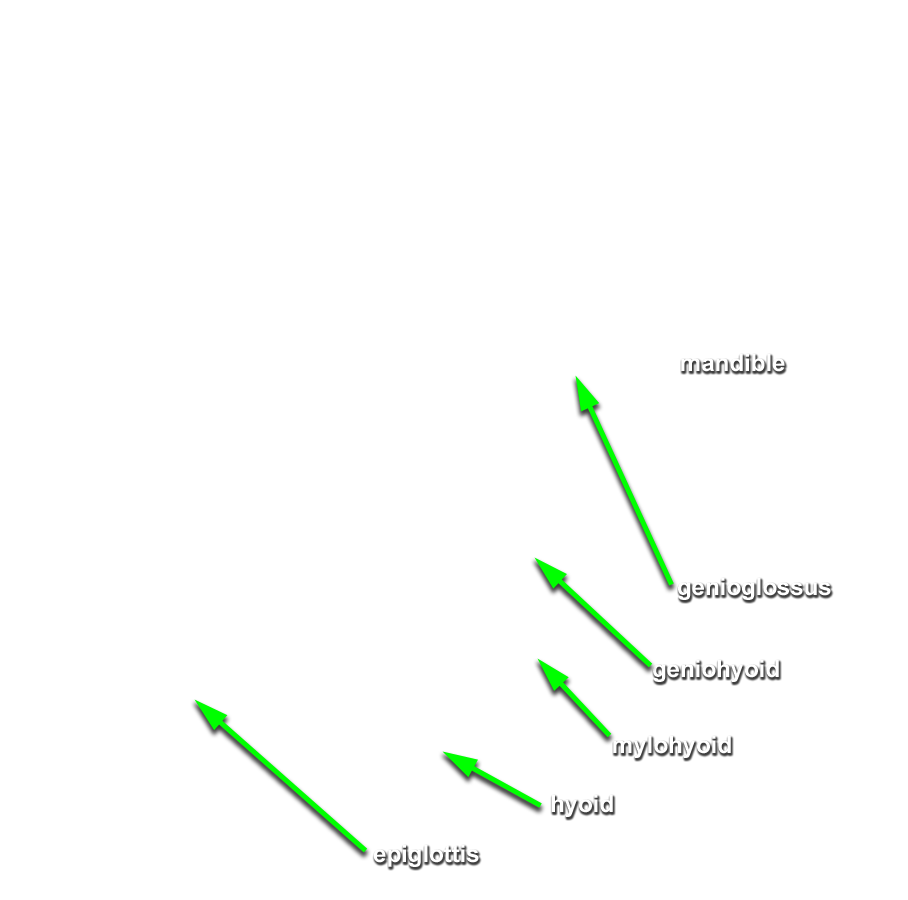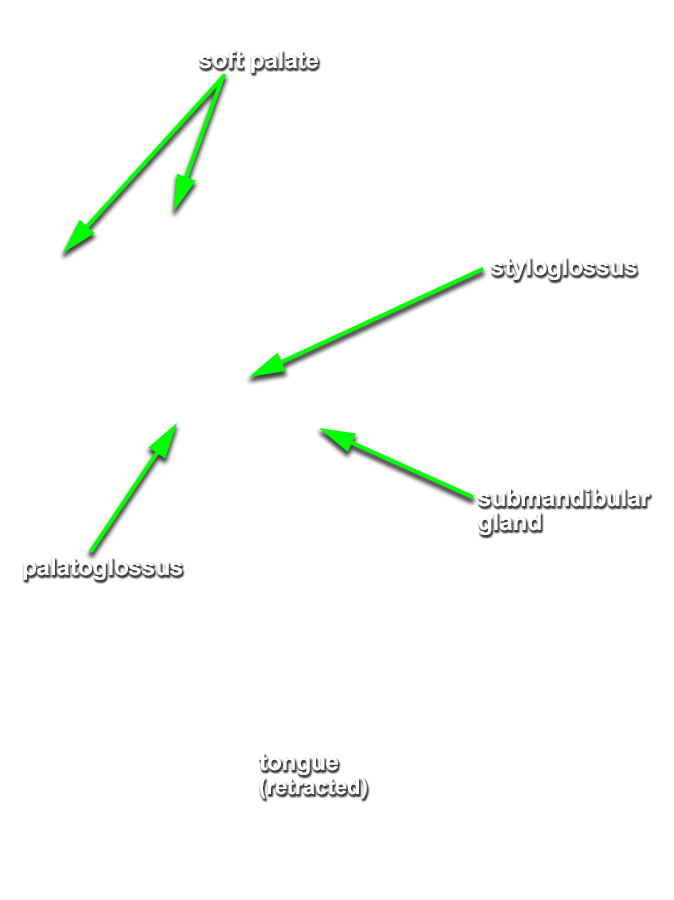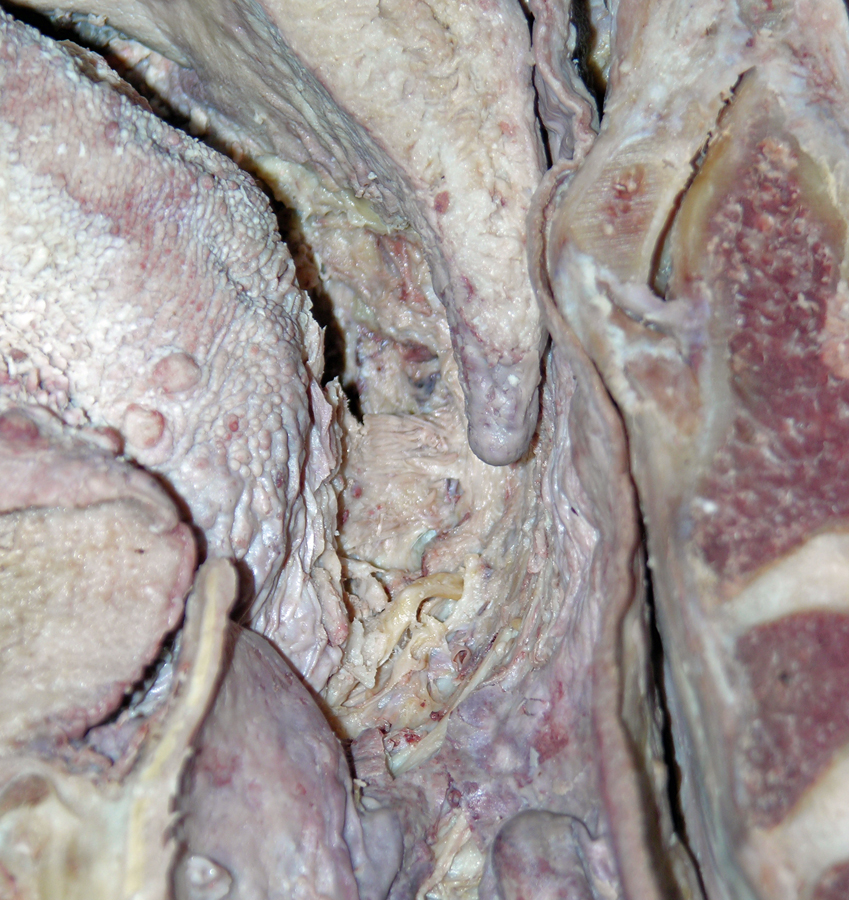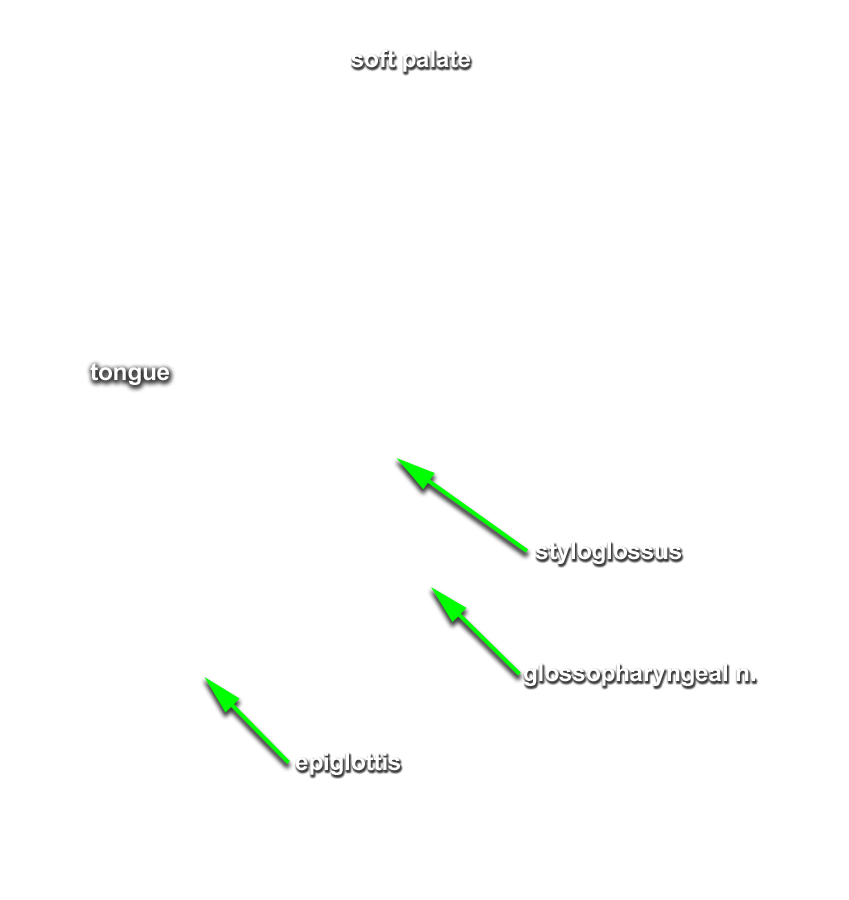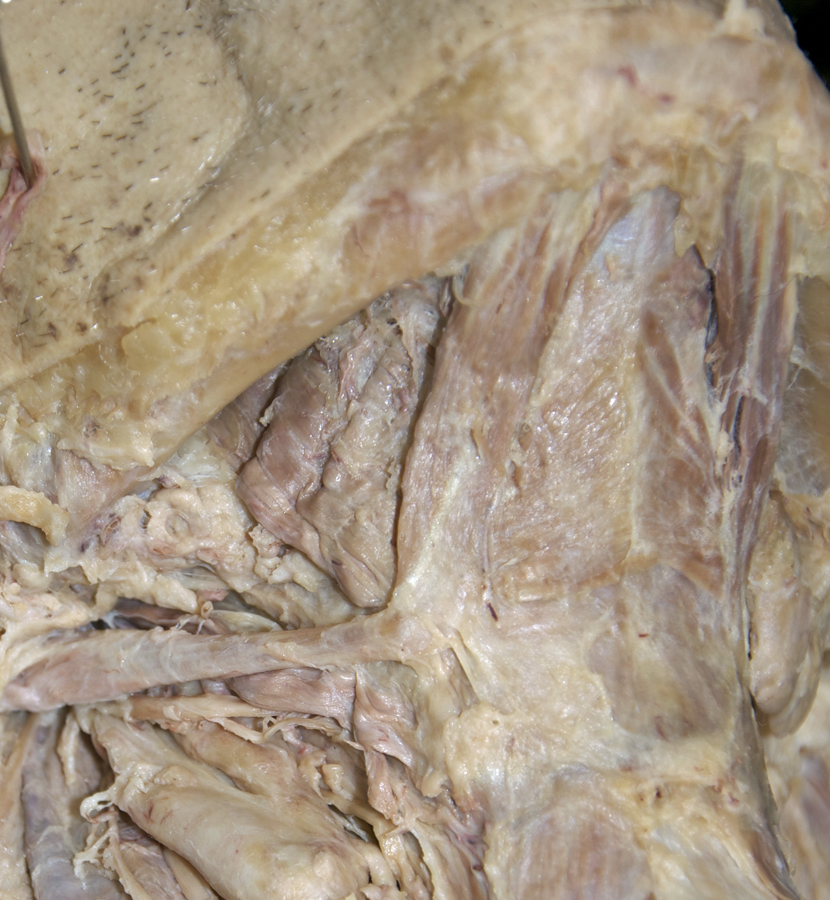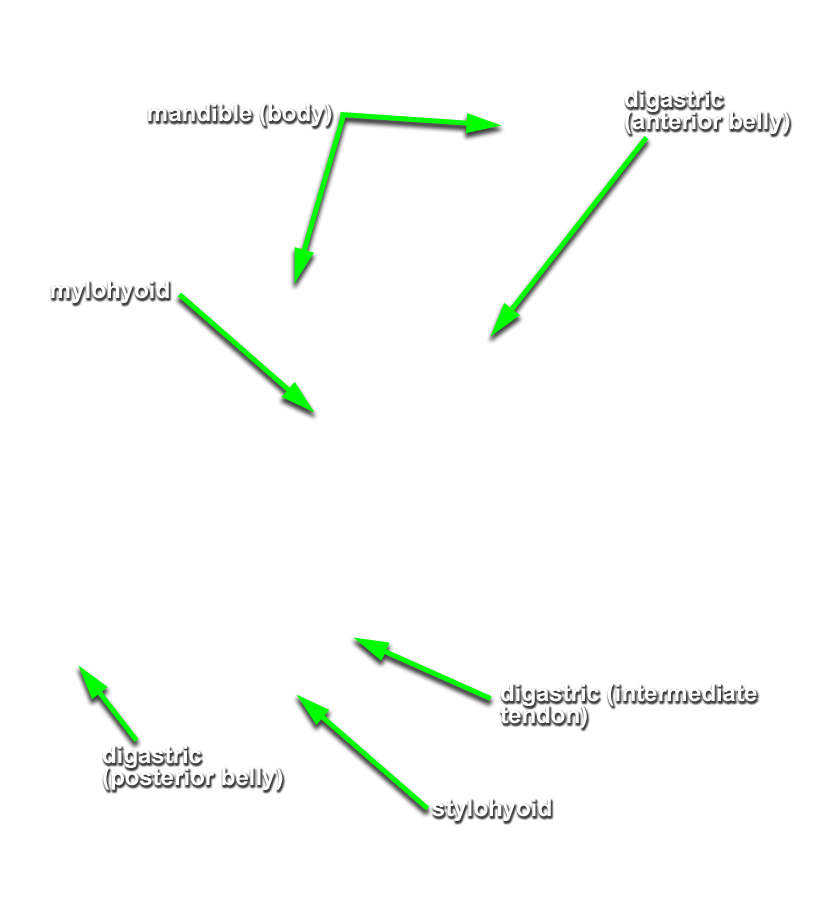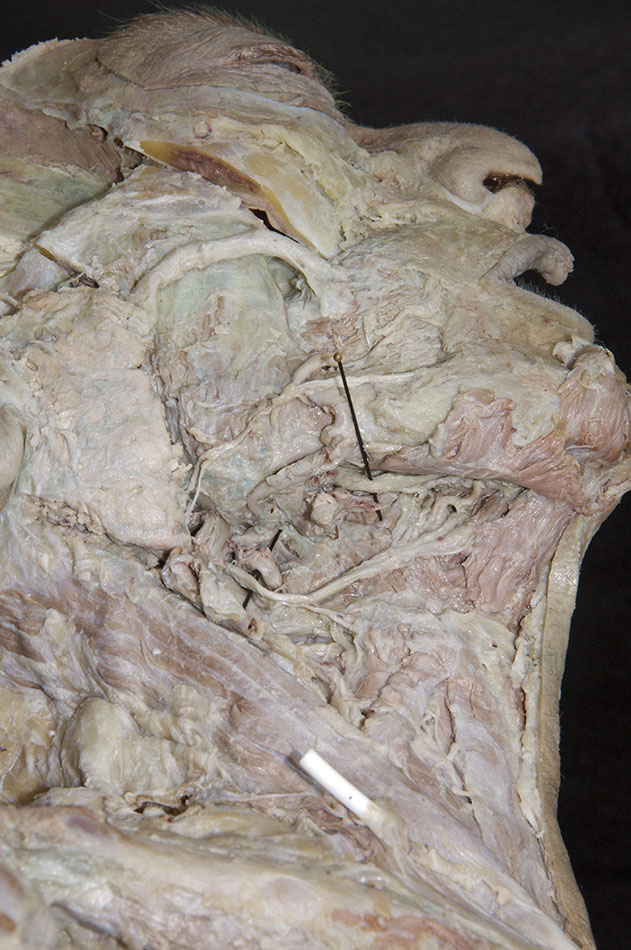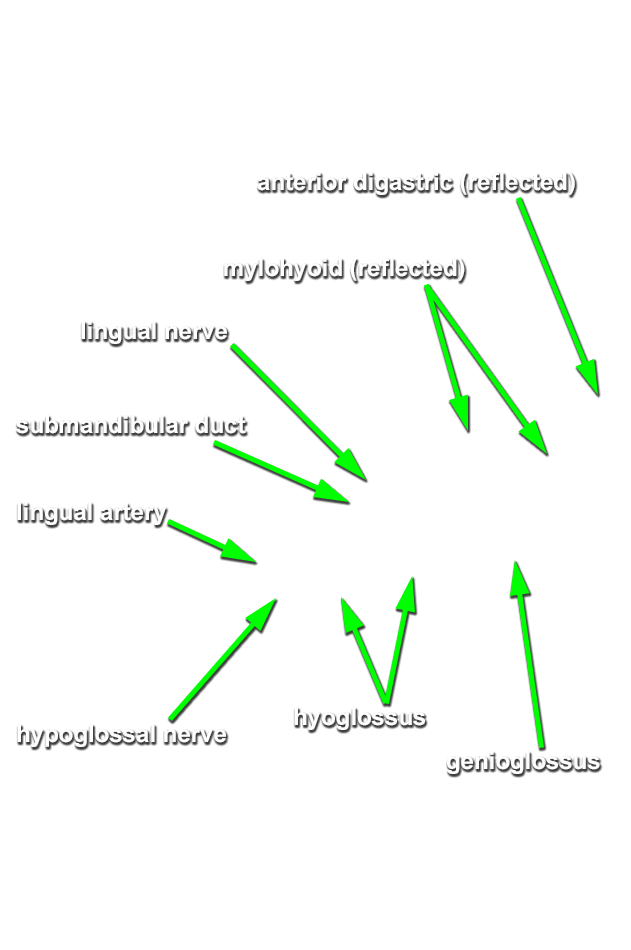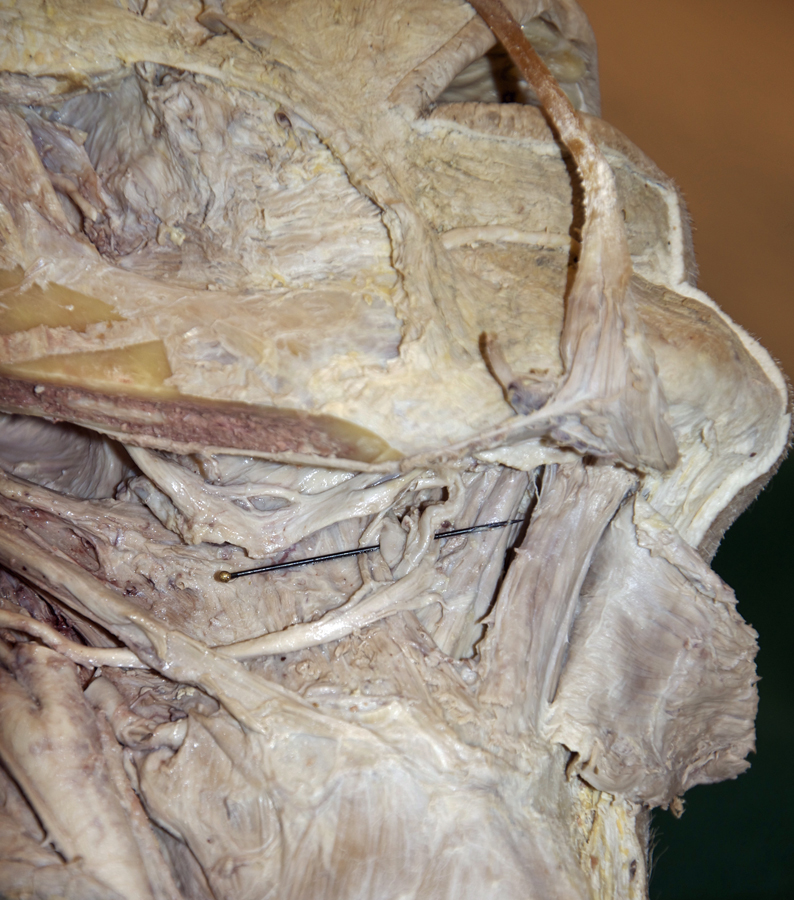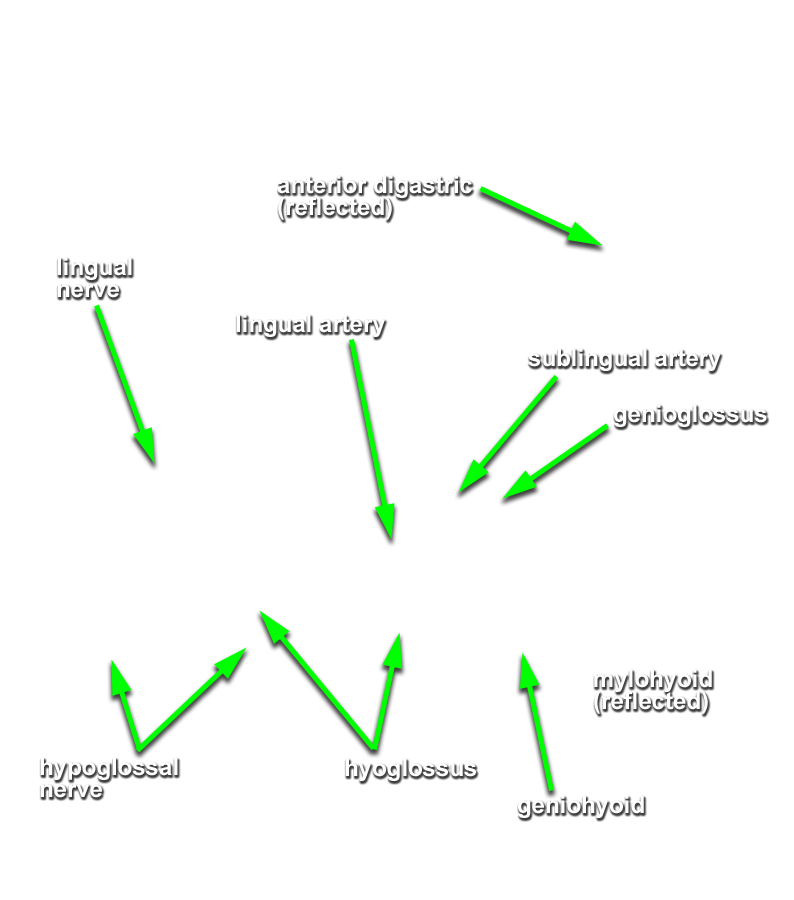Identify the muscles of the oral cavity and tongue.
-
(ON BOTH SIDES) Examine the medial surface of the bisected head and identify the
mylohyoid,
geniohyoid and
genioglossus muscles. (G 7.61A;N 64;Gl 44.23)
Important Relationship
- The mylohyoid muscle is positioned inferior to the geniohyoid muscle.
- The genioglossus muscle is positioned superior to the geniohyoid muscle.
- (ON THE LEFT SIDE ONLY) Carefully blunt dissect the posterior-lateral aspect of the tongue adjacent to the palatoglossus muscle to expose and identify the styloglossus muscle. (G 8.32C;N 68;Gl 44.19) The styloglossus muscle is located in the space between the palatoglossus and the palatopharyngeus muscles. Attempt to identify the glossopharyngeal nerve slightly inferior-medial to the styloglossus muscle.
-
(ON THE RIGHT SIDE ONLY) From the inferior direction reflect the mylohyoid muscle from the midline towards the mandible. If necessary, remove the anterior digastric muscle. Identify and clean the
hyoglossus muscle. (G 8.28B;N 70;Gl 44.21B) Identify the
lingual and
hypoglossal nerves passing lateral to the hyoglossus muscle. It may be necessary to remove the lingual vein (Step 4D below) to clean the hypoglossal nerve lateral to the hyoglossus muscle.
Important Relationships
- The hyoglossus muscle is positioned superior to the hyoid bone.
- The hypoglossal nerve passes deep (superior-medial) to the mylohyoid muscle and lateral to the hyoglossus muscle.
-
(ON THE RIGHT SIDE ONLY) Identify the lingual artery passing medial (deep) to the hyoglossus muscle. Identify the
lingual vein. Trace the hypoglossal nerve and lingual vein to the anterior border of the hyoglossus muscle. Blunt dissect the ligual vein away to identify the
lingual artery and
sublingual artery at the anterior border of the hyoglossus muscle.
Important Relationship
- The lingual artery passes medial (deep) to the hyoglossus muscle.
